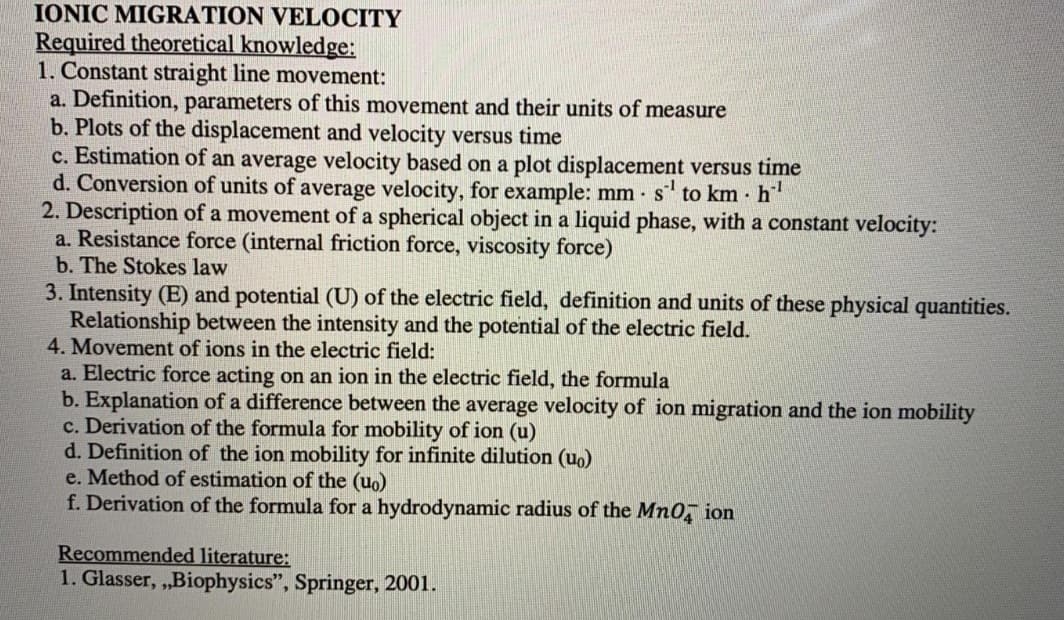migration c. Derivation of the formula for mobility of ion (u) d. Definition of the ion mobility for infinite dilution (uo) e. Method of estimation of the (uo) f. Derivation of the formula for a hydrodynamic radius of the Mn0, ion
migration c. Derivation of the formula for mobility of ion (u) d. Definition of the ion mobility for infinite dilution (uo) e. Method of estimation of the (uo) f. Derivation of the formula for a hydrodynamic radius of the Mn0, ion
Chapter13: Kinetic Methods
Section: Chapter Questions
Problem 6P
Related questions
Question
Hi . I want an answer to question number 4, especially a point C and F

Transcribed Image Text:IONIC MIGRATION VELOCITY
Required theoretical knowledge:
1. Constant straight line movement:
a. Definition, parameters of this movement and their units of measure
b. Plots of the displacement and velocity versus time
c. Estimation of an average velocity based on a plot displacement versus time
d. Conversion of units of average velocity, for example: mm - s to km h
2. Description of a movement of a spherical object in a liquid phase, with a constant velocity:
a. Resistance force (internal friction force, viscosity force)
b. The Stokes law
3. Intensity (E) and potential (U) of the electric field, definition and units of these physical quantities.
Relationship between the intensity and the potential of the electric field.
4. Movement of ions in the electric field:
a. Electric force acting on an ion in the electric field, the formula
b. Explanation of a difference between the average velocity of ion migration and the ion mobility
c. Derivation of the formula for mobility of ion (u)
d. Definition of the ion mobility for infinite dilution (uo)
e. Method of estimation of the (uo)
f. Derivation of the formula for a hydrodynamic radius of the Mn0, ion
Recommended literature:
1. Glasser, ,Biophysics", Springer, 2001.
Expert Solution
This question has been solved!
Explore an expertly crafted, step-by-step solution for a thorough understanding of key concepts.
Step by step
Solved in 2 steps with 1 images

Recommended textbooks for you

